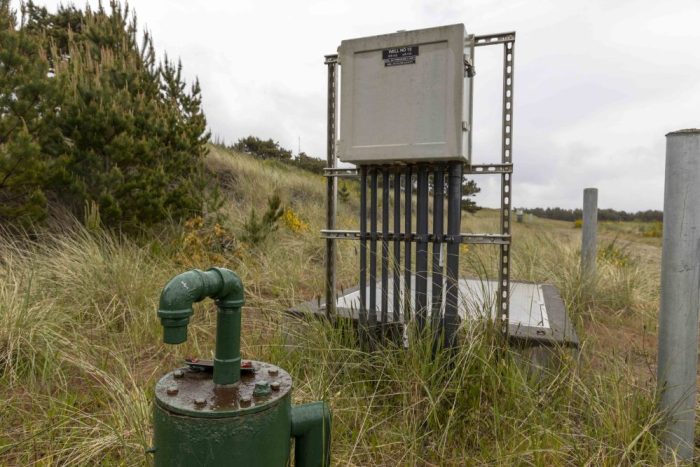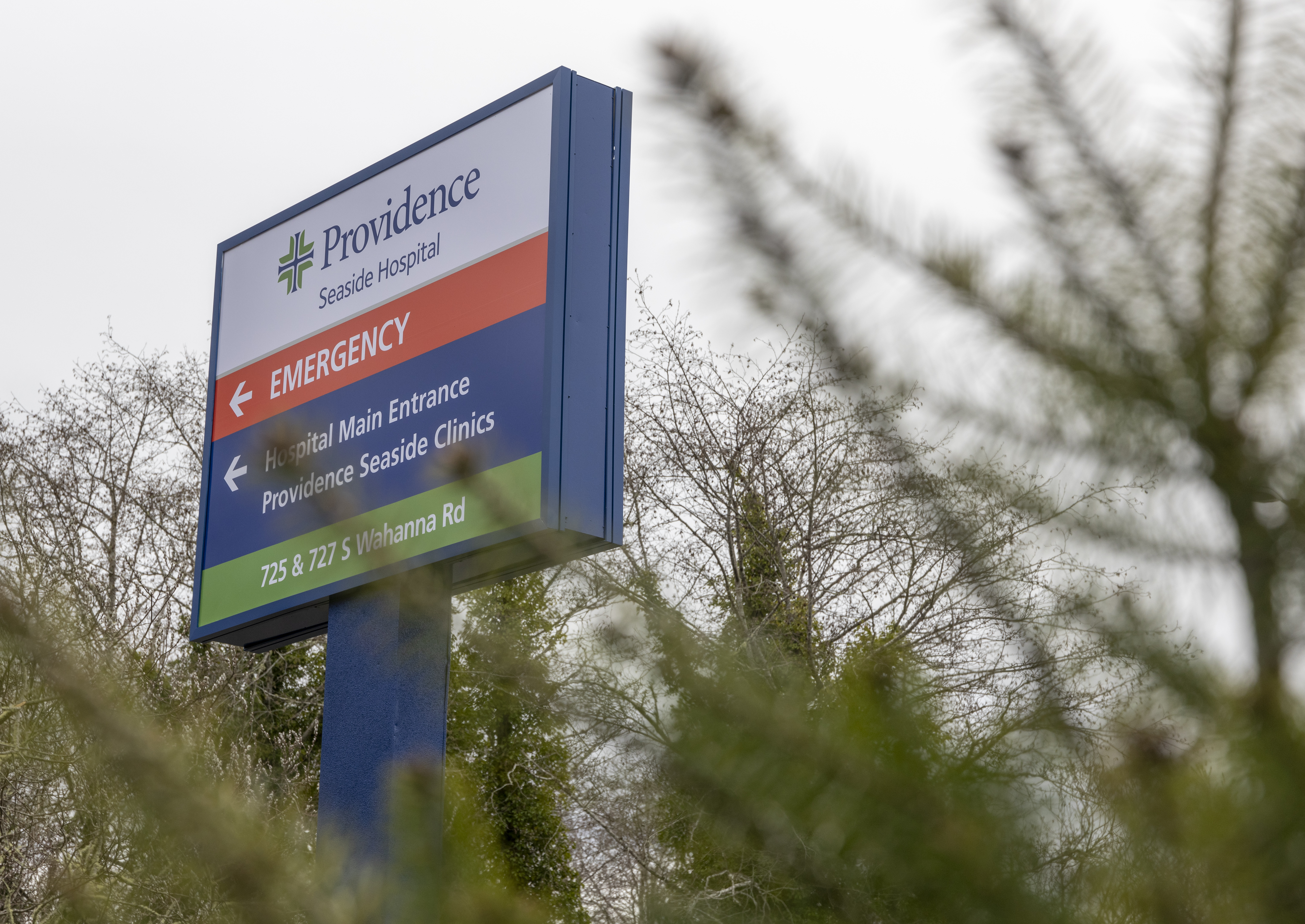Gearhart wants its own water rights
Published 1:44 pm Saturday, June 7, 2025

- There are eight wells that pump groundwater for Gearhart residents. (Lukas Prinos/The Astorian)
Gearhart is pursuing full water rights from the Oregon Water Resources Department amid an expiring contract to share Warrenton’s water supply. But the odds of getting the application approved, according to hydrogeologist Chris Hyatt, could be around 50-50.
Gearhart has been purchasing water from Warrenton for decades to help meet peak season demands. A memorandum of understanding in 2012 allowed Gearhart to purchase water at a discounted rate with the assumption that Gearhart would strive toward the ability to supply its own water.
In 2023, a contract between Warrenton and Gearhart was updated with a provision to allow Gearhart to continue purchasing water at an in-town rate for one more year before moving to an out-of-town rate in the summer of 2024. The contract is set to expire next year, leading Gearhart city staff to search for a long-term solution.
Trending
That solution could come in the form of an approved application for full water rights for Gearhart, said City Administrator Chad Sweet. Currently, around 67% of the city’s water comes from groundwater about 160 feet beneath the dunes, with Warrenton providing the other 33%.
The main thing keeping the city from obtaining full water rights is an Oregon Water Resources Department regulation stating that if a pump is within a quarter mile of a surface body of water, water service could impact that body of water.
“The regulation is an assumption that you have the potential to impact that surface water body, and therefore it is why we don’t have a greater water rate in the summertime,” said Hyatt, who has been contracting with the city. “You’re not allowed to withdraw one more than 1% of the measured stream flow in that surface water body. And that makes a huge assumption.”
Gearhart is the only city in Clatsop County to draw resources from groundwater, as opposed to surface water found in lakes, rivers and streams. Because of this, Hyatt said the regulation doesn’t apply; the city has submitted an extensive groundwater model along with its application that shows no impact to the Neacoxie Creek, even with a projected increase in water usage.
Gearhart has eight production wells alongside the dunes that pump intermittently, switching off with one another so as not to stress any one part of the aquifer, which could result in saltwater intrusion.
Hyatt said he and the city had been collecting data through the wells, which measure certain parameters every two hours, and through gauges in the Neocoxie Creek, which measure data every 15 minutes.
Trending
“So we’re collecting data at an incredibly high rate, which is why I’m here,” he said. “So we have a very good real time view of what is going on in both surface water and groundwater over the last 10 years.”
A previous application was withdrawn in 2024 to address technical compliance with the Oregon Water Resources Department’s filing requirements.
“Many of the issues could have been clarified informally, but the city opted to revise and improve the application,” Hyatt said. “This also allowed us to integrate OWRD-recommended modeling data, ensuring a more robust submission aligned with agency expectations.”
Though city staff are hopeful their scientific argument will be strong enough, whether the application will be approved is a toss-up. Hyatt said he would put chances at about a 50-50 or a 60-40, with odds in Gearhart’s favor.
While the city is anticipating questions from the Oregon Water Resources Department in coming months, it could take up to a year for staff to hear back about whether the application will be approved. The department does not have a specific time estimate for processing the application, a spokesperson wrote in an email.
Some residents are instead pushing for a regional approach to water rights that would encompass the whole of Clatsop County. Deanna Mancill, a Gearhart resident, expressed doubts about the feasibility of a full water rights application and said she would favor a regional approach.
Climate change, she said, is a big variable, as the aquifer depends on rainwater for replenishment. Additionally, Clatsop County’s sea level is projected to rise by 0.8 feet to 4.8 feet by 2100, which could cause saltwater intrusion and exacerbate flooding.
“NOAA (National Oceanic and Atmospheric Administration) sea level rise map shows various flooding outcomes depending on a one-foot rise, versus a four-foot rise,” Mancill told The Astorian in an email. “Scientists really cannot predict the outcome.”
Mancill said the Necanicum Estuary “is a Conservation Estuary. Clatsop County, Gearhart and Seaside all are partners in the Necanicum Estuary Inventory Plan, adopted by the Board of County Commissioners in 1984. Pumping too much groundwater may have a detrimental effect on Neacoxie Creek, which is part of the estuary plan. The Oregon Water Resources Department will review the Gearhart application with far greater scrutiny.”
Sweet said that the push for a regional approach to water rights is “not a terrible idea, because it kind of looks at an area from much farther up.” But it is a long-term process that could take many years to achieve.
“It’s a concern, I think, for all water systems (regionally),” he said. “You know, we’re growing a lot, and can we continue that? So I think that’s why this work is important, because the local control means that we can continue to invest in our water system as a smarter investment, and, you know, maybe lower the water costs for people within our community, but then provide emergency water, and we’ve just seen this growth in the community that is just huge.
“All of our towns are struggling with that infrastructure. So the more we do as a group, the better. But in this case, and right now, I think if we can, you know, we’re showing through our application process that our aquifer is in pretty good shape, so we want to bring that to the table to be able to take care of our water needs, and then what that will do is help relieve some of our neighboring communities to be able to take care of theirs.”
If the application is not approved, Sweet said Gearhart would likely continue to contract with Warrenton for water, though things may change depending on Warrenton’s available supply in the future.
A review of the Clatsop Plains Community Plan 2040 shows that the city of Warrenton has halted new water connections. Clatsop County has also imposed restrictions on new development west of U.S. Highway 101.
“These actions reflect growing concern about the region’s water capacity, further highlighting the need for Gearhart to proactively secure its own sustainable water supply,” Hyatt said.









